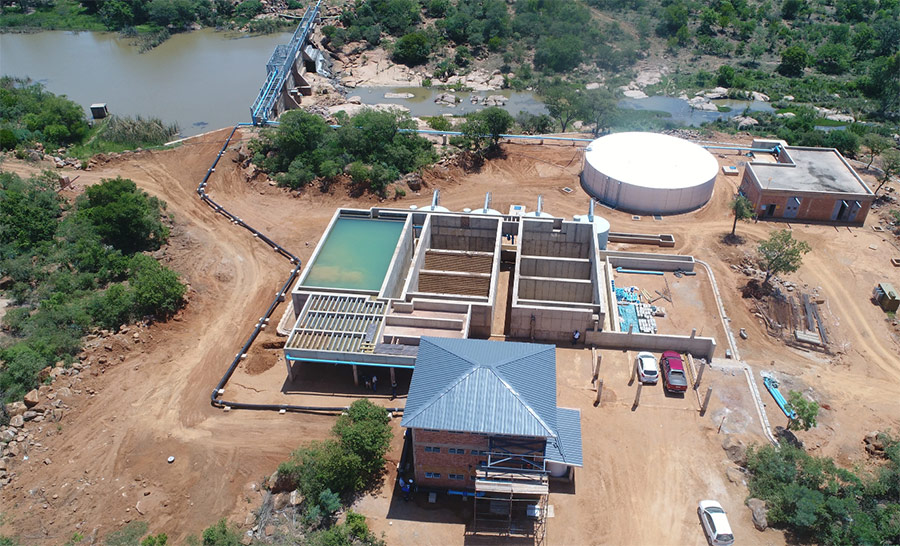Ceenex is assisting Thembisile Hani Local Municipality to provide a reliable and secure supply of water to Boekenhouthoek, Mathysenloop, Machipe and Bundu in Mpumalanga.
The company is the specialist sub-consultant for the water-treatment works (WTW) and pump system design and it is working alongside Monde Consulting Engineers, the lead engineer, on this water-augmentation project.
This is the largest service-delivery infrastructure project to have ever been undertaken by the municipality. It is being funded by the Municipal Infrastructure Grant and implemented in phases.
This is also Thembisile Hani Local Municipality’s first WTW, which is already supplying over half of the total demand of the planned supply zone at 3 million litres (ML) of water a day.
Initially, Ceenex was involved in the resource study for the availability of surface water sources within the area. Upon conclusion, the findings of the study were incorporated into the water scheme’s masterplan.
Post the resource study, Ceenex was also appointed by the municipality for the design and supervision of the various construction components of the scheme.
These components included the WTW and the new weir and abstraction point on the Moses River. The new weir and abstraction point, with a capacity of 5ML a day, were completed during the first phase of the project. Ceenex also supervised the building of a new 10ML command reservoir in Bundu and the construction of sections of the 8km bulk pipeline associated with the scheme.
Water is pumped from the WTW via a rising main into the two Boekenhouthoek B reservoirs. They are connected to the existing pipeline and the new Boekenhouthoek B pipeline that feeds the two Boekenhouthoek A reservoirs. From there, the pipeline feeds the new 10ML command reservoir and two reservoirs in Matheysenloop.
Prior to this project, Thembisile Hani Local Municipality relied upon other Water Service Authorities for the supply of bulk water.
Ensuring a regular supply of water for its constituents has remained a key priority for the municipality and steady progress has been made on the project, since construction commenced in April 2016.
The WTW incorporates a conventional treatment process to simplify operation.
It uses a high-pressure pumping system that comprises top-of-the-range variable-speed pumps that have been sourced from a local manufacturer, Curo Pumps.
The human-machine interface system was also designed to provide central access to the control system and is easy to operate.
In addition, a novel mechanical rapid gravity sand filter was selected by the team of engineers for the removal of fine suspended solids from the water. It limits operator intervention to periodic maintenance inspections.
Powdered Activated Carbon (PAC) was also incorporated into the treatment process to remove colouring from the water that is being extracted from the Moses River.
The command reservoir also stands out as another sound example of the extent of innovation deployed by the engineering team on this project. Its wall and roof were built from precast-concrete elements to significantly accelerate the delivery of the structure.
The project has also created skills training and development opportunities for small, medium and micro enterprises.
Almost 40 small back-owned contractors with a Construction Industry Development Board (CIDB) 1 and 2 grading worked on the construction of the WTW, alone. They were selected under a transparent tender process and mentored by the principal contractor.
The success of the project can be attributed to excellent dynamics between the client, engineering teams, contractors, sub-contractors, suppliers and the many members of the community who have worked on the project.

